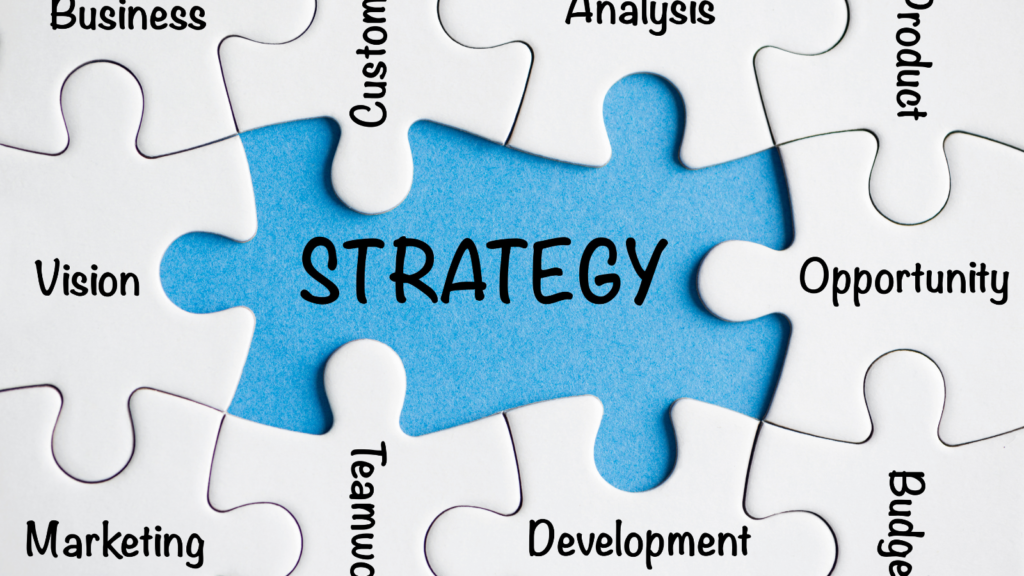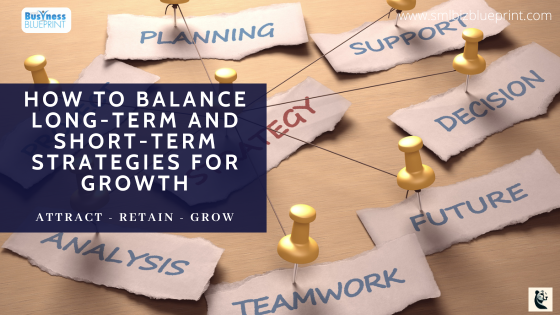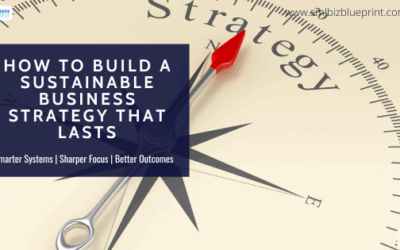Strategic planning is crucial for navigating immediate challenges and future opportunities in the ever-evolving business world.
The ability to balance long-term and short-term strategies can significantly impact a company’s success and sustainability.
According to a study by Harvard Business Review, companies that effectively balance these approaches see 76% higher revenue growth than those that focus solely on short-term gains.
This blog post will explore the key differences between long-term and short-term strategy planning and provide best practices for achieving a harmonious balance.
We will delve into the benefits and risks of each approach, discuss how market analysis contributes, and offer practical tips for adapting strategies to changing market conditions.
Whether you are a business leader looking to refine your strategic planning or an entrepreneur seeking sustainable growth, this guide will provide valuable insights to help you succeed.

#1 Understanding Long-Term vs Short-Term Strategy Planning
What are the key differences between long-term and short-term strategies?
In the realm of business strategy, understanding the distinction between long-term and short-term planning is fundamental.
Each approach serves a unique purpose and addresses different aspects of a company’s growth and sustainability.
Long-Term Strategies
Long-term strategies are focused on future growth and sustainability. These strategies typically span several years and aim to build a strong foundation for continued success.
They involve significant investments in research and development (R&D), branding, and market expansion. Long-term strategies often prioritise innovation, customer loyalty, and sustainable practices.
Key Characteristics of Long-Term Strategies
- Goals: Achieve sustainable growth, enhance brand reputation, and innovate for future success.
- Timeframe: Usually extends over several years.
- Resource Allocation: Significant investment in R&D, infrastructure, and long-term projects.
- Risk Tolerance: Higher risk due to the uncertain nature of future markets and trends.
For example, Amazon’s continuous investment in technology and infrastructure is a hallmark of its long-term strategy. By focusing on long-term growth, Amazon has positioned itself as a leader in e-commerce and cloud computing, ensuring sustained market dominance.
Short-Term Strategies:
Conversely, short-term strategies are designed to address immediate needs and achieve quick wins. These strategies are typically implemented over a few months to a year, focusing on immediate performance improvements, cost reductions, and capitalising on current market opportunities.
Key Characteristics of Short-Term Strategies:
- Goals: Achieve quick results, improve immediate performance, and address urgent challenges.
- Timeframe: Typically spans a few months to a year.
- Resource Allocation: Focus on projects that deliver rapid returns on investment (ROI).
- Risk Tolerance: Lower risk as these strategies are based on current market conditions and immediate needs.
A good example of an effective short-term strategy is a retail company running a seasonal sales campaign to boost holiday sales. This approach capitalises on immediate market opportunities and generates quick revenue boosts.
Comparing Long-Term and Short-Term Strategies:
Understanding the differences between these strategies helps businesses allocate resources and set realistic goals effectively. While long-term strategies build a foundation for future success, short-term strategies ensure the business remains agile and responsive to current market conditions.
Balancing Both Approaches:
Effective strategic planning requires a balance between long-term and short-term strategies.
Companies that focus solely on short-term gains risk missing out on future opportunities, while those that only prioritise long-term goals may struggle with immediate challenges.
A balanced approach allows businesses to achieve immediate results while laying the groundwork for sustainable growth.
Grasping the key differences between long-term and short-term strategies is crucial for any business aiming for holistic growth. By combining these approaches, companies can ensure they remain competitive today while preparing for tomorrow’s challenges.
#2 The Importance of Balancing Short-Term and Long-Term Goals
How do you balance the need for short-term results with long-term goals?
Balancing short-term results with long-term goals is a critical challenge for many businesses.
Achieving this balance ensures that a company can meet immediate needs while also laying the foundation for sustainable growth and future success.
Importance of a Clear Vision and Mission:
A clear vision and mission act as a guiding star for both short-term and long-term strategies.
They provide a framework for all strategic decisions, ensuring organisational consistency and alignment. Leaders can make informed decisions about immediate actions that support these broader objectives by defining what the company aims to achieve in the long run.
Example: Tesla’s mission to accelerate the world’s transition to sustainable energy guides both its long-term investments in technology and its short-term goals, such as meeting production targets.
Implementing a Dual-Track Strategy:
A dual-track strategy involves simultaneously pursuing short-term and long-term goals. This approach ensures that while the company addresses immediate challenges and seizes quick wins, it remains focused on its long-term vision.
It requires a strategic allocation of resources to projects that deliver immediate results and those that will pay off in the future.
Example: A company might invest in a quick marketing campaign to boost current sales while also developing a new product line that is expected to launch in two years.
Regular Review and Adjustment:
Continuous evaluation and adjustment of strategies are crucial for maintaining the balance between short-term and long-term goals. Regular performance reviews help identify what is working and what is not, allowing for timely adjustments.
This iterative process ensures that short-term actions remain aligned with long-term objectives and that the company can adapt to changing market conditions.
Example: Google’s OKR (Objectives and Key Results) framework allows it to set and track ambitious goals, adjusting them as needed to stay aligned with its long-term vision.
Fostering a Culture of Flexibility:
Creating a culture that values flexibility and adaptability is essential for balancing short-term and long-term goals. Employees should be encouraged to think both short-term and long-term, understanding how their immediate tasks contribute to the company’s future success.
This mindset helps create a resilient organisation capable of navigating both immediate and future challenges.
Example: IBM’s transformation from a hardware company to a cloud computing and AI leader was driven by a culture that embraced change and innovation.
Leveraging Data and Analytics:
Data and analytics play a critical role in balancing short-term and long-term strategies. By leveraging data, businesses can make informed decisions about where to allocate resources and how to adjust their strategies.
Analytics help identify trends, measure performance, and predict future outcomes, ensuring that both short-term and long-term goals are based on solid evidence.
Example: Netflix uses data analytics to guide its short-term content recommendations and long-term content production strategy, ensuring alignment between immediate user preferences and future content investments.
Balancing short-term results with long-term goals is a dynamic and ongoing process that requires a clear vision, dual-track strategies, regular reviews, a culture of flexibility, and data-driven decision-making.
By implementing these best practices, businesses can achieve immediate success while building a strong foundation for sustained growth and future achievements.
Companies with strong long-term strategies outperform their peers by 47% in revenue growth. (Source: McKinsey)
#3 Effective Long-Term Strategies for Sustainable Business Growth
What are some examples of effective long-term strategies for business growth?
Long-term strategies are crucial for building a resilient and sustainable business. These strategies create a strong foundation for future success by prioritising innovation, customer loyalty, and sustainable practices.
Below are some key long-term strategies that have proven effective for sustainable business growth.
Investment in Research and Development (R&D):
Investing in R&D is essential for driving innovation and staying ahead of the competition. By continuously developing new products and improving existing ones, businesses can meet evolving customer needs and open new market opportunities.
Example: Apple’s commitment to R&D has resulted in groundbreaking products like the iPhone and iPad, solidifying its position as a leader in the tech industry. Apple spends billions annually on R&D to ensure it remains at the forefront of innovation.
Building Strong Customer Relationships and Brand Loyalty
Fostering strong customer relationships and brand loyalty is a cornerstone of long-term success. This involves delivering consistent value, exceptional customer service, and customer engagement through personalised experiences.
Example: Starbucks has built a loyal customer base by offering a unique customer experience, personalised rewards through its loyalty program, and continuous innovation in its product offerings. This approach has helped Starbucks maintain a strong global market presence.
Developing Sustainable Business Practices:
Sustainability is increasingly becoming a critical component of long-term strategy.
Implementing sustainable practices helps protect the environment, enhances brand reputation, and meets the growing consumer demand for eco-friendly products.
Example: Unilever has integrated sustainability into its business model through the Unilever Sustainable Living Plan, aiming to decouple growth from environmental impact. This commitment to sustainability has improved Unilever’s brand image and driven growth by appealing to environmentally conscious consumers.
Expanding Market Reach:
Expanding into new markets can provide significant growth opportunities. This could involve entering new geographical regions, targeting different customer segments, or diversifying product lines.
Example: Amazon’s expansion into global markets and various product categories, from books to electronics and cloud services, has been a key driver of its exponential growth. This diversification has helped Amazon capture a larger market share and reduce dependency on any single market.
Fostering a Culture of Continuous Improvement:
A culture that embraces continuous improvement and innovation is vital for long-term success. Encouraging employees to think creatively, take risks, and constantly seek better ways to do things can drive sustainable growth.
Example: Toyota’s implementation of the Kaizen philosophy, which focuses on continuous improvement, has been instrumental in its success. This approach has led to increased efficiency, reduced waste, and improved product quality, maintaining Toyota’s competitive edge in the automotive industry.
Implementing effective long-term strategies is essential for sustainable business growth.
By investing in R&D, building strong customer relationships, adopting sustainable practices, expanding market reach, and fostering a culture of continuous improvement, businesses can create a solid foundation for future success.
These strategies ensure resilience in the face of changing market conditions and position companies for sustained growth and profitability.

#4 Utilizing Market Analysis in Strategic Planning
What role does market analysis play in long-term vs short-term strategy planning?
Market analysis is critical to strategic planning, providing the insights necessary to make informed decisions and align strategies with market realities.
By understanding market conditions, customer needs, and competitive dynamics, businesses can craft strategies responsive to immediate demands and aligned with long-term goals.
Importance of Market Analysis for Informed Decision-Making:
Market analysis enables businesses to gather and interpret data about market conditions, customer preferences, and competitive landscapes.
This information is essential for making strategic decisions that are grounded in reality rather than assumptions.
Example: Before launching a new product, a thorough market analysis can reveal customer demand, potential market size, and competitor strategies, ensuring that the launch is well-timed and targeted effectively.
Supporting Both Long-Term and Short-Term Strategies:
Market analysis is valuable for both long-term and short-term strategic planning. For short-term strategies it helps identify immediate opportunities and threats, allowing businesses to act quickly and decisively. For long-term strategies, it provides a broader understanding of market trends and future growth opportunities.
Example: A company might use market analysis to identify a short-term opportunity to capitalise on a seasonal trend and to understand long-term demographic shifts that could impact its market over the next decade.
Tools and Frameworks for Conducting Market Analysis:
Several tools and frameworks, including SWOT analysis, PEST analysis, and competitive analysis, can assist in conducting effective market analysis.
Each tool offers a structured approach to evaluating different aspects of the market environment.
SWOT Analysis:
- Strengths: Internal attributes that support achieving objectives.
- Weaknesses: Internal attributes that hinder achieving objectives.
- Opportunities: External factors that the company can exploit to its advantage.
- Threats: External factors that could cause trouble for the company.
PEST Analysis:
- Political: Impact of government policies, regulations, and political stability.
- Economic: Economic trends, exchange rates, and economic growth.
- Social: Societal trends, demographics, and consumer attitudes.
- Technological: Technological advancements and innovations.
Competitive Analysis:
- Identifying key competitors.
- Analysing competitors’ strengths, weaknesses, strategies, and market positions.
Data-Driven Decision Making:
Leveraging data and analytics is crucial for market analysis. Businesses can gain deep insights into market dynamics and customer behaviour by utilising data from various sources, such as market research reports, customer surveys, and sales data.
Example: Netflix uses data analytics to predict customer preferences and guide both content acquisition and original content creation, ensuring that its offerings meet current and future customer demands.
Adapting Strategies Based on Market Insights:
Monitoring market conditions allows businesses to adapt their strategies in response to changes. This flexibility is essential for maintaining relevance and competitiveness in a dynamic market environment.
Example: IBM’s shift from a focus on hardware to cloud computing and AI services was driven by market analysis highlighting the growing demand for these technologies. By adapting its strategy based on market insights, IBM was able to remain competitive and grow in new areas.
Market analysis plays a pivotal role in both long-term and short-term strategic planning. It provides the data and insights needed for informed decision-making, supports the development of responsive and aligned strategies, and enables businesses to adapt to changing market conditions.
By utilising tools like SWOT, PEST, and competitive analysis, businesses can ensure that their strategies are grounded in market realities and poised for success.
#5 Adapting Strategies to Changing Market Conditions
How can a company adapt its long-term strategy in response to changing market conditions?
In today’s rapidly evolving business environment, the ability to adapt long-term strategies to changing market conditions is crucial for maintaining competitiveness and ensuring sustainable growth.
Flexibility and agility in strategic planning allow businesses to respond effectively to new opportunities and threats.
Necessity of Flexibility and Agility in Strategic Planning:
Flexibility and agility are essential components of effective strategic planning.
A rigid strategy can leave a company vulnerable to unforeseen market changes, while a flexible approach allows for quick adjustments and proactive responses.
Example: During the COVID-19 pandemic, many companies had to pivot their strategies quickly. Restaurants, for example, shifted focus from dine-in services to delivery and takeaway options, leveraging digital platforms to reach customers.
Importance of Continuous Monitoring and Evaluation of Market Trends:
Regularly monitoring market trends is vital for staying ahead of changes. Businesses should continuously gather and analyse data on market conditions, customer preferences, and competitive activities.
This ongoing evaluation helps identify emerging trends and potential disruptions early, allowing for timely strategic adjustments.
Example: Retailers often use market trend analysis to adjust their inventory and marketing strategies based on seasonal trends and consumer behaviour patterns, ensuring they effectively meet current demand.
Adopting an Iterative Approach to Strategy Development:
An iterative approach to strategy development involves regularly revisiting and refining strategies based on new information and changing conditions.
This approach ensures that strategies remain relevant and effective over time.
Example: Tech companies like Google and Facebook frequently update their product strategies based on user feedback and market trends, ensuring their offerings remain competitive and meet user needs.
Utilizing Scenario Planning for Future Uncertainties:
Scenario planning is a strategic tool that helps businesses prepare for future scenarios. Companies can better manage uncertainties and react swiftly to changes by envisioning different outcomes and developing plans for each.
Example: Energy companies often use scenario planning to anticipate changes in regulations, market demand, and technological advancements, allowing them to adapt their long-term strategies accordingly.
Adapting long-term strategies to changing market conditions is essential for maintaining competitiveness and ensuring sustainable growth.
Businesses can effectively navigate changes and capitalise on new opportunities by embracing flexibility and agility, continuously monitoring market trends, adopting an iterative approach, utilising scenario planning, and learning from industry leaders.
These practices enable companies to remain resilient and proactive in a dynamic business landscape.
68% of businesses report that having a flexible and adaptive strategy is crucial for responding effectively to market changes and staying competitive. (Source: PwC)
#6 Leadership and Organizational Culture in Strategic Planning
What is the role of leadership in balancing long-term and short-term strategies?
Effective leadership and a supportive organisational culture are critical to successfully balancing long-term and short-term strategies.
Leaders set the vision, foster the right culture, and ensure that the company’s mission aligns with immediate and future goals.
Leadership’s Role in Setting a Clear Vision:
A clear and compelling vision is essential for guiding both long-term and short-term strategies. Leaders are responsible for articulating this vision and ensuring it is understood and embraced throughout the organisation.
This vision acts as a compass, aligning all strategic initiatives with the company’s overarching goals.
Example: Satya Nadella’s leadership at Microsoft has been pivotal in transforming the company. His clear vision of a mobile-first, cloud-first world has driven Microsoft’s strategic initiatives, balancing short-term product launches with long-term investments in cloud computing and AI.
Fostering a Strategic Mindset Across the Organization:
Leaders play a key role in fostering a strategic mindset at all levels of the organisation. This involves encouraging employees to think strategically about their roles and how their work contributes to both short-term results and long-term objectives.
A strategic mindset helps employees make decisions that align with the company’s goals and adapt to changing circumstances.
Example: Google’s use of the OKR (Objectives and Key Results) framework encourages employees to set ambitious goals that align with the company’s strategic vision, fostering a culture of strategic thinking and alignment.
Impact of Organizational Culture on Strategy Implementation:
A strong organisational culture supports the effective implementation of both long-term and short-term strategies. Culture influences how employees approach their work, respond to challenges, and embrace change.
A culture that values innovation, agility, and collaboration is more likely to balance immediate needs with future growth successfully.
Example: Amazon’s culture of customer obsession, innovation, and long-term thinking has been instrumental in its success. This culture drives employees to focus on both delivering immediate value and investing in long-term projects that enhance customer experience and business growth.
Importance of Communication and Collaboration:
Effective communication and collaboration are vital for aligning short-term and long-term strategies. Leaders must ensure that strategic goals are clearly communicated and that there is open dialogue across all levels of the organisation.
This fosters collaboration and ensures that everyone is working towards the same objectives.
Example: Regular town hall meetings, cross-functional team projects, and transparent communication channels at companies like Salesforce foster collaboration and ensure alignment between short-term actions and long-term goals.
Leading by Example:
Leaders must lead by example, demonstrating a commitment to both immediate performance and future vision. This involves making strategic decisions that balance short-term gains with long-term benefits and showing resilience and adaptability in the face of change.
Example: Jeff Bezos’s leadership at Amazon has consistently demonstrated a focus on long-term growth. His willingness to invest in long-term projects, such as Amazon Web Services (AWS), even at the expense of short-term profits, has set a strong example for the company’s strategic direction.
Leadership and organisational culture play pivotal roles in balancing long-term and short-term strategies. Leaders can align immediate actions with future goals by setting a clear vision, fostering a strategic mindset, nurturing a supportive culture, ensuring effective communication and collaboration, and leading by example.
This balance is essential for achieving sustainable business growth and maintaining a competitive edge in a dynamic market.
Conclusion
Balancing long-term and short-term strategy planning is essential for any business striving to achieve sustainable growth and maintain a competitive edge.
Businesses can effectively allocate resources and set realistic goals by understanding the key differences between long-term and short-term strategies.
A clear vision, supported by a strong organisational culture and effective leadership, helps ensure alignment between immediate actions and future objectives.
Key Takeaways:
- Understanding Long-Term vs Short-Term Strategy Planning: Recognize the distinct goals, timeframes, and risk tolerances associated with each approach to better allocate resources and set realistic goals.
- Balancing Short-Term and Long-Term Goals: Implement strategies that achieve quick wins while laying the groundwork for future success. Review and adjust these strategies regularly to stay aligned with overall objectives.
- Effective Long-Term Strategies for Sustainable Growth: Invest in R&D, build strong customer relationships, adopt sustainable practices, expand market reach, and foster a culture of continuous improvement.
- Utilising Market Analysis in Strategic Planning: Use tools like SWOT, PEST, and competitive analysis to make data-driven decisions and adapt strategies based on market insights.
- Adapting Strategies to Changing Market Conditions: Embrace flexibility and agility, monitor market trends, adopt an iterative approach, and use scenario planning to manage uncertainties.
- Leadership and Organizational Culture: Ensure leaders set a clear vision, foster a strategic mindset, and cultivate a supportive culture to balance short-term and long-term goals effectively.
By implementing these best practices, businesses can achieve immediate results while building a strong foundation for sustained success.
This balanced approach ensures that companies remain competitive today while preparing for the challenges and opportunities of tomorrow.
Are you ready to improve your strategic planning? Start by evaluating your current strategies and identifying areas for better balancing short-term and long-term goals.
Consider incorporating market analysis tools, fostering a culture of continuous improvement, and ensuring your leadership is aligned with your vision.
For more insights and actionable tips, subscribe to our newsletter and stay updated with the latest trends in strategic planning.
Let’s build a resilient and successful future together!
FAQs
Q1. What are the main differences between long-term and short-term strategies?
A1: Long-term strategies focus on future growth, sustainability, and building a strong foundation, often spanning several years. They prioritise innovation, customer loyalty, and sustainable practices. On the other hand, short-term strategies aim for immediate results, quick wins, and addressing current challenges, typically implemented over a few months to a year.
Q2. How can businesses balance short-term results with long-term goals?
A2: Balancing short-term results with long-term goals involves setting a clear vision and mission, implementing a dual-track strategy, regularly reviewing and adjusting strategies, fostering a culture of flexibility, and leveraging data and analytics for informed decision-making. This approach ensures that immediate actions support long-term objectives.
Q3. Why is market analysis important for strategic planning?
A3: Market analysis provides the data and insights necessary for making informed strategic decisions. It helps businesses understand market conditions, customer needs, and competitive dynamics, supporting both short-term and long-term strategies. Tools like SWOT, PEST, and competitive analysis can be used to gather and interpret this information effectively.
Q4. What are some examples of effective long-term strategies?
A4: Effective long-term strategies include investing in research and development (R&D), building strong customer relationships and brand loyalty, adopting sustainable business practices, expanding market reach, and fostering a culture of continuous improvement. These strategies help create a solid foundation for future success and sustainable growth.
Q5. How can companies adapt their long-term strategies to changing market conditions?
A5: Companies can adapt their long-term strategies by embracing flexibility and agility, continuously monitoring market trends, adopting an iterative approach to strategy development, utilising scenario planning, and learning from industry leaders and case studies. This ensures that strategies remain relevant and effective in a dynamic market environment.
Q6. What role does leadership play in strategic planning?
A6: Leadership is crucial in setting a clear vision, fostering a strategic mindset, nurturing a supportive organisational culture, ensuring effective communication and collaboration, and leading by example. Leaders guide the alignment of short-term actions with long-term goals, ensuring that the company remains focused on its mission and vision.
Q7. How can effective communication and collaboration improve strategic planning?
A7: Effective communication and collaboration ensure that strategic goals are clearly communicated and understood across all levels of the organisation. This fosters alignment, encourages teamwork, and helps ensure that everyone is working towards the same objectives, enhancing the effectiveness of both short-term and long-term strategies.
Other Articles
How Limiting Your Critical Measures Can Drive Business Success




